All You Need to Know about Ultrasonic Sensors
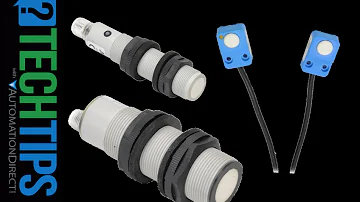
Ultrasonic Sensors Overview
Catalog
I Ultrasonic Sensor Construction
Ultrasonic sensors are devices that convert ultrasonic signals into other energy signals (usually electrical signals). They are widely used in industry, national defense, biomedicine, automotive applications, and smart home systems. As of 2025, the global ultrasonic sensor market has grown significantly, reaching approximately USD 7.13 billion, with projections to exceed USD 11 billion by 2030.
The ultrasonic sensor is mainly composed of the following four parts:
1. Transmitter
Ultrasonic waves are generated through the vibration of an oscillator (generally piezoelectric ceramic products, with a diameter typically ranging from 10-20 mm) and radiated into the air or other transmission medium. Modern transmitters use advanced piezoelectric materials such as lead zirconate titanate (PZT) or polyvinylidene fluoride (PVDF) for improved efficiency and durability.
2. Receiver
When the ultrasonic oscillator receives the ultrasonic wave, corresponding mechanical vibration occurs, converting the ultrasonic wave into electrical energy as the output of the receiver. Contemporary receivers feature enhanced signal processing capabilities with integrated amplification circuits for better sensitivity and noise reduction.
3. Control Part
It uses an integrated ultrasonic sensor circuit or microcontroller to control the ultrasonic transmission of the transmitter and determines the amplitude of the received signal and whether the receiver has successfully detected the ultrasonic echo. Modern control systems often incorporate digital signal processing (DSP) and machine learning algorithms for improved accuracy and object recognition.
4. Power Supply
The ultrasonic sensor is usually powered by an external DC power supply of 5V, 12V±10%, or 24V±10%, which is supplied to the sensor through an internal voltage stabilizing circuit. Recent developments include low-power designs for IoT applications, with some sensors operating on as little as 3.3V for battery-powered devices.
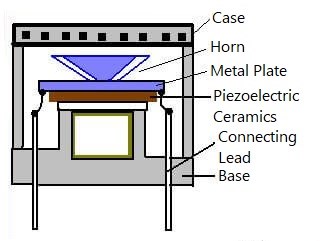
Ultrasonic Sensors Construction
II Performance Indicators
The core of the ultrasonic probe is a piezoelectric chip in its plastic or metal package. A chip can be made from many materials, and the dimensions of the chip, such as diameter and thickness, vary significantly. Therefore, the performance of each probe differs. We must understand its performance characteristics before use. The main performance indicators of ultrasonic sensors include:
1. Working Frequency
The operating frequency is the resonant frequency of the piezoelectric chip. When the frequency of the AC voltage applied to the ultrasonic sensor equals the resonance frequency of the chip, the energy output is maximum and the sensitivity is highest. Common frequencies range from 25 kHz to 500 kHz, with 40 kHz being the most popular for general-purpose applications. Higher frequencies (200-500 kHz) are used for precision applications requiring shorter detection ranges but higher resolution.
2. Operating Temperature
Generally, because the Curie point of piezoelectric materials is high (typically above 300°C for PZT ceramics), especially for ultrasonic probes with low service power used for diagnostic purposes, the working temperature is relatively low, and the probe can work for extended periods without failure. Standard ultrasonic sensors typically operate in the range of -25°C to +70°C, while industrial-grade sensors can function from -40°C to +85°C. Medical ultrasonic probes operating at higher power levels require dedicated cooling systems.
3. Sensitivity
Sensitivity primarily depends on the manufacturing quality of the chip. If the electromechanical coupling coefficient is high, the sensitivity is correspondingly high. Modern sensors achieve sensitivity levels of -65 dB to -75 dB, with advanced models reaching even higher sensitivity through improved materials and manufacturing processes. Temperature compensation circuits are now commonly integrated to maintain consistent sensitivity across varying environmental conditions.
4. Directivity
Directivity defines the detection range and beam pattern of ultrasonic sensors. The beam angle typically ranges from 6° to 80°, depending on the application requirements. Narrow beam angles (6-15°) provide precise detection of small objects, while wider angles (30-80°) are suitable for detecting larger objects or monitoring broader areas.
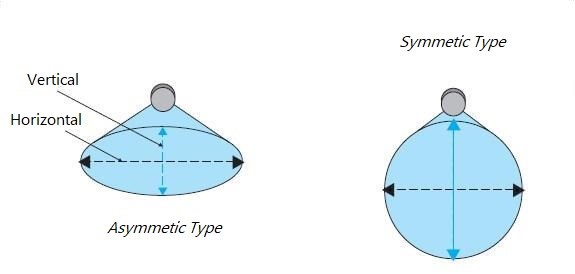
Directivity Types for Ultrasonic Sensors
III Ultrasonic Sensors Working Principle
1. Ultrasonic Sound Wave
What is Ultrasonic Sound?
First, we should understand the ultrasonic frequency range. The sound we hear is produced by the vibration of objects, with frequencies in the range of 20 Hz to 20 kHz. Sound with a frequency greater than 20 kHz is called ultrasonic or ultrasound, while sound with frequencies less than 20 Hz is called infrasonic. Commonly used ultrasonic frequencies range from tens of kHz to tens of MHz.
Ultrasonic waves are a form of mechanical oscillation in elastic media, which can propagate as transverse waves or longitudinal waves. They can travel through gases, liquids, and solids at different velocities. Additionally, ultrasonic waves exhibit refraction and reflection phenomena and experience attenuation during propagation.
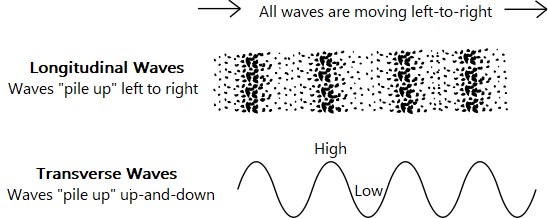
Transverse Wave and Longitudinal Wave Propagation
When ultrasonic waves are transmitted in air, the frequency is typically lower, generally in the tens of kHz range, and attenuation is rapid. In solids and liquids, higher frequencies can be used, with reduced attenuation and longer propagation distances. The speed of ultrasound varies by medium: approximately 343 m/s in air at 20°C, 1,480 m/s in water, and 5,000+ m/s in steel.
Based on the properties of ultrasonic waves, ultrasonic measuring devices can be developed using ultrasonic sensors and are widely applied in communications, medical diagnostics, industrial automation, and consumer electronics.
The main materials for ultrasonic sensors are piezoelectric crystals (electrostrictive) and magnetostrictive alloys such as nickel-iron-aluminum. A piezoelectric ultrasonic sensor is a reversible transducer that converts electrical energy into mechanical oscillations to produce ultrasonic waves. Simultaneously, when receiving ultrasonic waves, it converts them back into electrical energy.
2. How Ultrasonic Sensors Work
When a high-frequency voltage is applied to the piezoelectric ceramic plate (transducer element) in the transmitter, the piezoelectric ceramic plate elongates or contracts based on the voltage polarity. The ultrasonic wave is propagated toward the target object in the form of pressure waves (the density and frequency can be modulated by the control circuit).
The ultrasonic receiver utilizes the piezoelectric effect, similar to pressure sensors. When ultrasonic waves strike the piezoelectric element, mechanical strain occurs, generating a sinusoidal voltage with positive polarity on one side and negative polarity on the other. Since the amplitude of the high-frequency signal is small, it must be amplified through integrated amplifier circuits. Modern sensors use advanced signal processing techniques including filtering, envelope detection, and time-of-flight (ToF) calculations to determine distance accurately.
The distance calculation formula is: Distance = (Speed of Sound × Time) / 2, where the division by 2 accounts for the round-trip travel of the ultrasonic pulse.
IV Ultrasonic Sensor Applications
1. Main Applications
Ultrasonic systems are applied across diverse sectors of production and practice, with medical applications being one of the primary uses.
In the medical field, ultrasonic sensors are primarily used to diagnose diseases and have become an indispensable diagnostic method in clinical medicine. Applications include:
Obstetric and gynecological imaging
Cardiac echocardiography
Abdominal and vascular imaging
Musculoskeletal diagnostics
Therapeutic ultrasound (lithotripsy, tumor ablation)
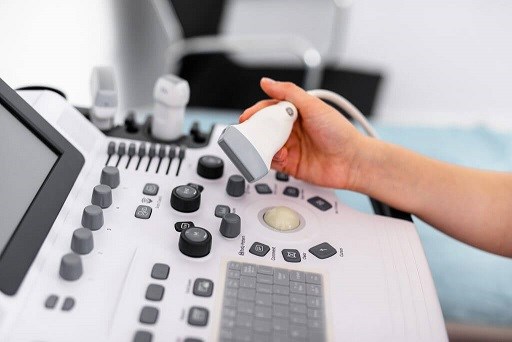
Ultrasonic Sensor in Medical Field
The advantages of ultrasonic diagnosis include: non-invasive, painless, simple methodology, clear imaging, high diagnostic accuracy, and real-time visualization. Therefore, it is easily adopted and welcomed by medical professionals and patients alike.
In industry, typical applications of ultrasonic sensors include non-destructive testing (NDT) of materials, ultrasonic thickness measurements, level sensing, proximity detection, and flow measurement. The automotive industry has become a major consumer, with ultrasonic sensors used extensively in parking assistance systems, blind-spot detection, and autonomous vehicle navigation.

Ultrasonic Thickness Gauge
In the past, many technologies were hindered by the inability to detect the internal structure of objects non-destructively. The advent of ultrasonic sensing technology has transformed this situation. Many ultrasonic sensors are now installed in different devices, "silently" detecting the signals people need for quality control, safety monitoring, and process optimization.
In future applications, combined with artificial intelligence, Internet of Things (IoT) connectivity, and advanced materials technology, more intelligent ultrasonic sensors with higher sensitivity, better environmental resistance, and enhanced data processing capabilities will emerge. The integration of 3D ultrasonic imaging and multi-sensor fusion technologies is expected to revolutionize robotics and autonomous systems.
2. Specific Applications
(1) Ultrasonic sensors can be used to detect the status of containers. They can be mounted on the top of plastic melt tanks, silos, or granulating chambers. When sound waves are sent to the container, we can analyze the container status, such as full, empty, or partially filled, based on the time-of-flight and echo characteristics.
(2) Ultrasonic sensors can detect transparent objects, liquids, and materials with rough, smooth, or reflective surfaces, as well as irregularly shaped objects. They are suitable for indoor applications but may have limitations outdoors due to temperature variations, wind, and precipitation. They are not ideal for detecting foam objects or materials that absorb sound waves.
(3) Ultrasonic sensors are used in food processing facilities to implement closed-loop control systems for plastic packaging detection. With this technology, ultrasound detection can be performed in wet environments such as bottle washing machines, noisy environments, and areas with significant temperature fluctuations.
(4) Ultrasonic sensors are employed for liquid level monitoring, tension control, distance measurement (similar to distance sensors), and are mainly used in packaging, bottle manufacturing, material handling, coal inspection, plastic processing, and the automotive industry. They are also used for process monitoring to detect defects, ensure quality control, and improve product quality.
(5) In smart homes and IoT applications, ultrasonic sensors are integrated into security systems, automatic faucets, hand dryers, and occupancy detection systems for energy management.
(6) In robotics and drones, ultrasonic sensors provide collision avoidance, terrain mapping, and altitude control. Recent advances in 3D ultrasonic technology enable robots to perceive their environment in three dimensions, significantly improving navigation and safety.
V Problems and Precautions During Operation
The application of ultrasonic sensors is relatively simple and convenient, and the cost is very economical. However, certain challenges may occur during operation, including reflection problems, noise interference, and cross-interference.
1. Reflection Problem
If the object is always at a right angle to the sensor, the ultrasonic sensor will obtain optimal readings. Unfortunately, in practice, very few objects are positioned at perfect right angles. Several errors may occur:
(1) Triangular Error
When the object is at an angle to the sensor, there is a triangular error between the detected distance and the actual distance. This occurs because the ultrasonic wave travels a longer path when reflecting off an angled surface.
(2) Specular Reflection
At certain angles, sound waves emitted by the sensor are reflected away by smooth objects, resulting in no echo return and no distance reading. In this situation, the ultrasonic sensor will "ignore" the object. This is particularly problematic with polished metal surfaces, glass, or mirrors.
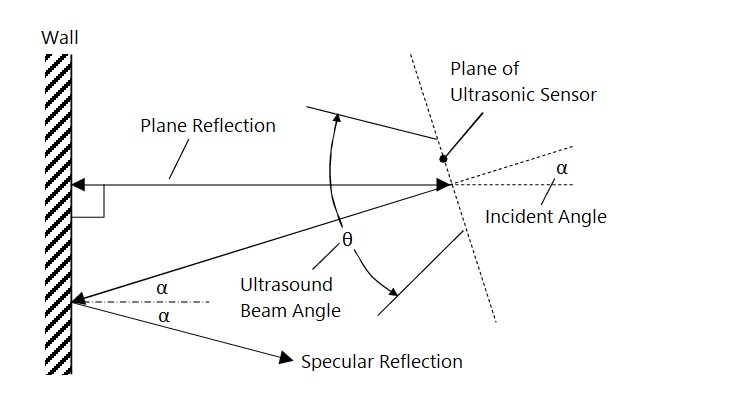
The Geometry of Ultrasound Sensor Reflection from a Wall
(3) Multiple Reflection
This phenomenon is more common when detecting corners or similar structures. Sound waves bounce back and forth multiple times before being received by the sensor, so the actual detected value does not represent the true distance. This problem can be mitigated by using multiple ultrasonic sensors arranged at specific angles. By analyzing the returned values from multiple ultrasonic waves, the correct reading can be determined through triangulation or sensor fusion algorithms.
2. Noise
Although most ultrasonic sensors operate between 40 kHz and 45 kHz, which are far higher than the frequencies humans can hear (20 Hz to 20 kHz), similar frequency noise exists in the surrounding environment. High-frequency noise produced by motor rotation, friction of wheels on hard surfaces, robot vibrations, or even ultrasonic waves emitted by other robots' sensors can cause the sensor to receive erroneous signals.
To address this problem, ultrasonic waves can be encoded. For example, sound waves with specific patterns or pulse sequences can be transmitted, and distance is calculated only when the probe detects the same combination of encoded waves. This effectively avoids misreading caused by ambient noise. Modern sensors also employ frequency hopping and spread-spectrum techniques to improve noise immunity.
3. Cross Interference
Cross-interference occurs when multiple ultrasonic sensors are mounted on a robot or system at certain angles. Sound waves emitted by ultrasonic sensor X may be reflected and picked up by sensors Y or Z. These sensors will then calculate distance based on this erroneous signal, resulting in incorrect measurement results. The solution is to encode the ultrasonic signal from each sensor uniquely and configure each sensor to recognize only its own transmitted signals. Time-division multiplexing (TDM) can also be employed, where sensors transmit sequentially rather than simultaneously.
4. Precautions
(1) To ensure reliability and long service life, do not use ultrasonic sensors in extreme outdoor conditions or above the rated temperature range. Protect sensors from direct exposure to harsh weather, UV radiation, and corrosive chemicals.
(2) Since ultrasonic sensors use air as the transmission medium, when local temperatures differ significantly, refraction and reflection at thermal boundaries may lead to malfunction. Ultrasonic detection distance also changes when wind is present. Therefore, sensors should not be used adjacent to devices such as forced-draft fans, HVAC outlets, or areas with strong air currents.

A Forced Draught Fan
(3) Air jets from nozzles contain a variety of frequencies that can interfere with sensor operation and should not be used near the sensor.
(4) Water droplets, condensation, or ice on the sensor surface will significantly shorten the detection distance and may cause erroneous readings. Use sensors with appropriate IP ratings for humid environments.
(5) Fine powders and sound-absorbing materials such as cotton, foam, or acoustic panels cannot be reliably detected as they absorb rather than reflect ultrasonic waves.
(6) Do not use sensors in vacuum environments or explosion-proof areas without proper certification, as ultrasonic waves require a medium for propagation and may not meet safety standards for hazardous locations.
(7) Do not use sensors in areas with steam or significant vapor. The atmosphere in such areas is non-uniform, creating temperature and density gradients that result in measurement errors due to refraction and variable sound velocity.
(8) Ensure proper mounting and alignment. Vibration, mechanical shock, and misalignment can degrade sensor performance. Use vibration-damping mounts when necessary.
(9) Consider the minimum and maximum detection ranges (blind zone and maximum range). Objects closer than the minimum range or beyond the maximum range cannot be detected accurately.
VI Detection of Ultrasonic Sensors
1. Detection Modes
Ultrasonic sensors primarily employ the direct reflection detection mode (also called pulse-echo mode). The object in front of the sensor reflects the emitted sound wave partially back to the receiver, thereby being detected by the sensor. This is the most common configuration and is used in the majority of applications.
There are also ultrasonic sensors using the through-beam mode (also called opposed mode or transmitter-receiver mode). A through-beam ultrasonic sensor consists of a separate transmitter and receiver that are positioned opposite each other and continuously "communicate" with each other. An object passing between the receiver and transmitter will block the transmitted sound waves, and the sensor will generate a switching signal. This mode offers longer detection ranges and is less affected by object surface characteristics.
2. Detection Range
The detection range of ultrasonic sensors depends on the wavelength and frequency. Longer wavelengths correspond to lower frequencies and longer detection distances. For example, compact sensors with millimeter-scale wavelengths have detection ranges from 30 mm to 500 mm, while sensors with 5 mm wavelengths can achieve detection ranges up to 8-10 meters. Industrial long-range sensors can detect objects at distances exceeding 15 meters.
Some sensors have a narrow sound wave emission angle of 6-8 degrees and are therefore more suitable for precise detection of relatively small objects or applications requiring high spatial resolution. Other sensors with emission angles of 12 to 30 degrees can detect objects with large inclination angles or monitor wider areas, making them suitable for presence detection and level measurement.
The detection range is also influenced by environmental factors such as temperature, humidity, air pressure, and the acoustic properties of the target object (size, shape, material, surface texture).
3. Detection Methods
Different detection methods are employed based on the characteristics of the detected object, such as volume, material composition, and whether it is stationary or moving. There are four common detection methods:
(1) Through-Beam (Opposed) Mode: The ultrasonic transmitter and receiver are located on opposite sides. When an object passes between them, it is detected based on ultrasonic attenuation or complete blockage. This method offers the longest detection range and highest reliability but requires alignment of two separate units.
(2) Diffuse Reflection (Proximity) Mode: The transmitter and receiver are located on the same side (often in the same housing). When an object enters within the detection range, it is detected based on the reflected ultrasonic wave. This is the most common and versatile detection method.
(3) Retro-Reflective Mode: The transmitter and receiver are located in the center of the detection area, and a reflector is positioned at the edge of the detection range. The attenuation value of the reflected wave without object obstruction is taken as the reference value. When an object passes within the detection range, it is detected based on the change in reflected wave amplitude (comparing the attenuation value with the reference value).
(4) Background Suppression Mode: The transmitter and receiver are located on the same side, and the detection object (typically a flat surface) serves as the reflection surface. The object is detected based on changes in the reflected wave characteristics. This method is useful when a background object exists beyond the target, and the sensor must ignore the background.
VII Ultrasonic Sensors VS. Sonar Sensors
Sonar sensors and ultrasonic sensors are two common detection devices. Many people assume they are identical, but this is not entirely accurate. While both technologies use sound waves for detection, there are important distinctions.
Sonar (Sound Navigation and Ranging) sensors directly detect and identify objects in water and underwater terrain profiles. They emit sound wave signals that reflect when encountering objects. Distance and position can be calculated based on the reflection time and wave pattern analysis. Sonar operates across a broader frequency spectrum, including audible frequencies (1-20 kHz) and ultrasonic frequencies (20-500 kHz), depending on the application.
Sonar sensing is primarily used for detecting marine life, underwater structures, and seafloor mapping—essentially determining what is in the water, its size, depth, and location. The devices used to detect submarines, fish schools, and underwater archaeological sites are sonar sensors. Sonar systems are specifically optimized for underwater propagation, where sound travels approximately 4.3 times faster than in air.
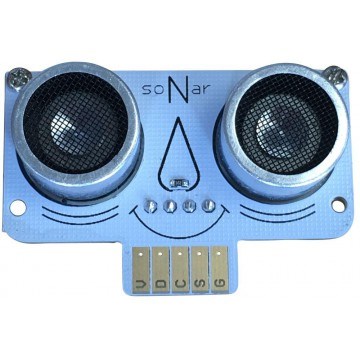
A Sonar Sensor
Ultrasonic waves are mechanical waves with vibration frequencies higher than audible sound waves (above 20 kHz), generated by transducer vibration under voltage excitation. They have high frequency, short wavelength, minimal diffraction, and good directivity, allowing them to propagate as focused beams.
Ultrasonic waves can penetrate liquids and solids, even propagating through tens of meters of opaque solid materials. When waves contact impurities or interfaces, significant reflection occurs, forming reflection echoes. When encountering moving objects, the Doppler effect occurs, causing frequency shifts. Therefore, ultrasonic detection is widely used in industrial non-destructive testing, medical diagnostics, distance measurement, and consumer electronics.
Ultrasonic sensors are devices developed by utilizing the characteristics of ultrasonic waves, primarily for applications in air or on solid surfaces, though they can also operate in liquids.
In industry, typical applications of ultrasonic sensors include non-destructive testing of metals, ultrasonic thickness measurement, level sensing, and proximity detection. In medicine, ultrasonic sensors are mainly used to diagnose diseases and have become an indispensable diagnostic method in clinical medicine.
Key Differences:
Operating Environment: Sonar is optimized for underwater use; ultrasonic sensors are primarily designed for air or surface applications.
Frequency Range: Sonar may use lower frequencies (1-500 kHz); ultrasonic sensors typically operate at 25-500 kHz.
Detection Purpose: Sonar focuses on underwater navigation and object identification; ultrasonic sensors are used for distance measurement, level detection, and proximity sensing.
Range: Sonar systems can detect objects at ranges of hundreds of meters to kilometers; ultrasonic sensors typically operate within 0.03-15 meters.
VIII Latest Developments and Future Trends (2024-2025)
Market Growth and Industry Trends
The ultrasonic sensor market has experienced remarkable growth, with the global market size reaching approximately USD 5.75-7.13 billion in 2024-2025. Industry analysts project the market will expand to USD 11.02-15.59 billion by 2030-2032, representing a compound annual growth rate (CAGR) of 9-14%. This growth is driven by increasing adoption in automotive applications, industrial automation, IoT devices, and smart city infrastructure.
1. Recent Technological Innovations
3D Ultrasonic Sensing Technology
One of the most significant breakthroughs in 2024 is the development of 3D ultrasonic sensing technology. Unlike traditional 2D ultrasonic sensors that provide distance information along a single axis, 3D ultrasonic sensors can map the environment in three dimensions. This technology transforms mobile robots' spatial awareness, offering improved safety performance and navigation capabilities compared to traditional vision systems. The 3D ultrasonic sensors are particularly valuable in dusty, foggy, or low-light environments where optical sensors struggle.
Ultra-Compact Form Factors
In September 2024, Baumer launched the UF200 ultrasonic sensor, which features the flattest front-mount ultrasonic sensor design available on the market. This innovation addresses space constraints in modern machinery and vehicles, enabling integration into applications where traditional sensors could not fit. The compact design does not compromise performance, maintaining detection ranges up to 8 meters with high accuracy.
Enhanced Environmental Resistance
Modern ultrasonic sensors now feature improved resistance to environmental factors including:
Extended operating temperature ranges (-40°C to +85°C for industrial models)
Higher IP ratings (IP67, IP68, IP69K) for water and dust protection
Improved resistance to chemical exposure and UV radiation
Anti-condensation coatings for humid environments
2. Integration with AI and IoT
Contemporary ultrasonic sensors increasingly incorporate artificial intelligence and machine learning algorithms for:
Intelligent Object Recognition: Distinguishing between different object types based on echo patterns
Adaptive Signal Processing: Automatically adjusting sensitivity and filtering based on environmental conditions
Predictive Maintenance: Self-monitoring sensor health and predicting failure before it occurs
IoT Connectivity: Integration with wireless protocols (Bluetooth, Wi-Fi, LoRaWAN, NB-IoT) for remote monitoring and control
3. Automotive Industry Expansion
The automotive sector has become the largest consumer of ultrasonic sensors. The U.S. automotive ultrasonic sensors market alone is projected to grow from USD 3.5 billion in 2024 to USD 7.7 billion by 2032, with a CAGR of 10.5%. Key automotive applications include:
Advanced parking assistance systems (APA)
Blind-spot detection
Autonomous emergency braking (AEB)
Level 2-4 autonomous driving systems
Electric vehicle (EV) charging port detection
4. Industrial Automation Advances
Industry 4.0 initiatives have accelerated ultrasonic sensor adoption in:
Collaborative robots (cobots) for safe human-robot interaction
Automated guided vehicles (AGVs) and autonomous mobile robots (AMRs)
Smart warehousing and logistics systems
Precision agriculture and drone applications
Predictive maintenance and condition monitoring
5. Energy Efficiency and Low-Power Designs
With the proliferation of battery-powered IoT devices, manufacturers have developed ultra-low-power ultrasonic sensors that:
Operate on as little as 3.3V with current consumption below 10 mA
Feature sleep modes and wake-on-demand functionality
Utilize energy harvesting techniques for self-powered operation
Extend battery life to years in wireless sensor networks
6. Multi-Sensor Fusion
Modern systems increasingly combine ultrasonic sensors with other sensing technologies:
Ultrasonic + LiDAR: Combining long-range precision with close-range reliability
Ultrasonic + Camera: Merging distance measurement with visual recognition
Ultrasonic + Radar: Achieving all-weather detection capabilities
Ultrasonic + IMU: Enhancing navigation accuracy through sensor fusion algorithms
7. Regional Market Dynamics
North America maintained its position as the largest market in 2024, driven by high automotive production, advanced manufacturing, and early adoption of automation technologies.
Asia-Pacific is projected to be the fastest-growing region, fueled by:
Rapid industrialization in China, India, and Southeast Asia
Expanding automotive manufacturing capacity
Government initiatives supporting smart manufacturing and smart cities
Growing consumer electronics market
8. Emerging Applications
New application areas for ultrasonic sensors include:
Healthcare: Contactless vital sign monitoring, fall detection for elderly care
Smart Buildings: Occupancy detection, energy management, automated HVAC control
Retail: Customer traffic analysis, queue management, inventory monitoring
Agriculture: Crop height measurement, precision spraying, livestock monitoring
Environmental Monitoring: Air quality sensing, wind speed measurement, weather stations
9. Standardization and Certification
Industry standards are evolving to ensure interoperability and safety:
ISO 26262 compliance for automotive functional safety
IEC 61508 for industrial functional safety
CE, FCC, and regional electromagnetic compatibility (EMC) certifications
Cybersecurity standards for IoT-connected sensors
10. Future Outlook
Looking ahead to 2025-2030, ultrasonic sensor technology is expected to advance in several key areas:
Higher Frequencies: Development of sensors operating at 1-5 MHz for microscale applications
Flexible and Wearable Sensors: Integration into textiles and wearable devices
Quantum Ultrasonic Sensors: Leveraging quantum effects for unprecedented sensitivity
Self-Calibrating Systems: Sensors that automatically compensate for environmental changes and aging
Edge AI Processing: On-sensor machine learning for real-time decision making
Sustainable Manufacturing: Eco-friendly materials and production processes
The convergence of ultrasonic sensing with artificial intelligence, 5G connectivity, and edge computing will create intelligent sensing ecosystems capable of autonomous decision-making and predictive analytics. As costs continue to decrease and performance improves, ultrasonic sensors will become ubiquitous in everyday devices, from smartphones to home appliances, contributing to safer, more efficient, and more sustainable technologies.
Article Update Information
Original Publication Date: 2020
Last Updated: October 2025
Major Updates Include:
Added comprehensive section on latest developments and future trends (2024-2025)
Updated market size data and growth projections with current statistics
Included information on 3D ultrasonic sensing technology breakthrough
Added details on Baumer UF200 ultra-compact sensor launch (September 2024)
Expanded automotive industry applications and market data
Updated operating temperature ranges and technical specifications
Added information on AI/ML integration and IoT connectivity
Included multi-sensor fusion technologies
Corrected technical terminology and improved accuracy throughout
Enhanced formatting with modern, responsive design and improved readability
Added practical examples of emerging applications in healthcare, smart buildings, and agriculture
Updated precautions section with modern best practices
Expanded comparison between ultrasonic and sonar sensors with key differences table
Sources Referenced:
Grand View Research - Ultrasonic Sensors Market Analysis 2024
Mordor Intelligence - Ultrasonic Sensors Market Report 2025
Fortune Business Insights - Global Ultrasonic Sensor Market 2024-2032
Forbes - 3D Ultrasonic Technology for Robotics (October 2024)
PS Market Research - US Automotive Ultrasonic Sensors Market
Industry technical publications and manufacturer specifications
Recommended Articles
Introduction to Temperature Sensors
Working Principle and Application of Infrared Sensors
1.How far can ultrasonic sensor work?
The maximum range of our products is presently 15.25 meters (about 50 feet) and varies by model. The distance at which an object is detected depends on its size, shape, and orientation.
2.What does the ultrasonic sensor read?
Ultrasonic sensors work by emitting sound waves at a frequency too high for humans to hear. They then wait for the sound to be reflected back, calculating the distance based on the time required. This is similar to how radar measures the time it takes a radio wave to return after hitting an object.
3.What type of sensor is ultrasonic sensor?
ultrasonic / level sensors measure the distance to the target by measuring the time between the emission and reception. An optical sensor has a transmitter and receiver, whereas an ultrasonic/level sensor uses a single ultrasonic element for both emission and reception.
4.How many types of ultrasonic sensors are there?
All together there are four types of ultrasonic sensors, classified by frequency and shape: the drip-proof type, high-frequency type, and open structure type (lead type and SMD type).
5.Can ultrasonic sensor detect human?
Finally, ultrasonic sensors assist in detecting people for autonomous navigation of robots. Ultrasonic sensors can be used to set multiple tripwire distances to help navigate around people. Additionally, the high read rate allows you to quickly detect when a person may enter your robot's path.
 The Key Role of Electronic Components in IoT DevicesUTMEL01 September 20234805
The Key Role of Electronic Components in IoT DevicesUTMEL01 September 20234805The article discusses the pivotal role of electronic components in Internet of Things (IoT) devices. IoT devices work by capturing real-world data using sensors, processing it through a microcontroller, and then sending it to the cloud for further analysis.
Read More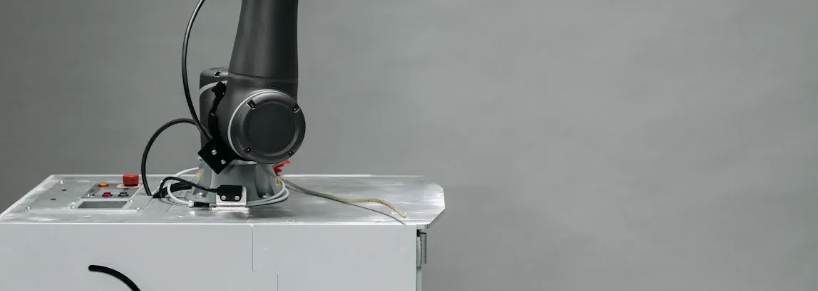 How to Identify the Perfect Proximity Sensor for Your ApplicationUTMEL19 July 2025640
How to Identify the Perfect Proximity Sensor for Your ApplicationUTMEL19 July 2025640Find the best proximity sensors for your project by evaluating material, sensing range, environment, and system needs to ensure optimal performance and reliability.
Read More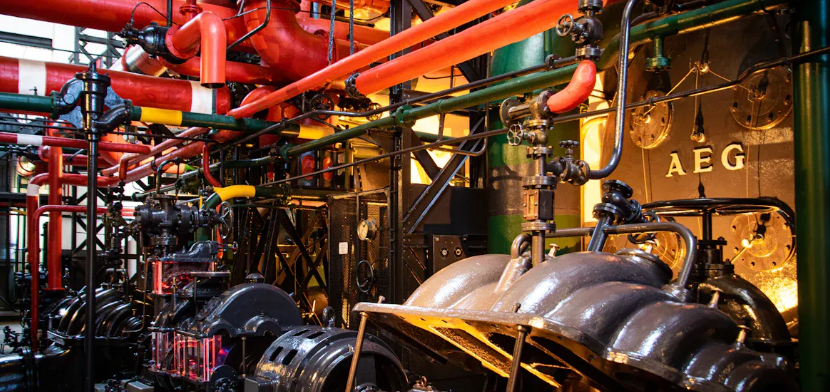 Trusted Vibration Sensors for Homeowners and Industry ProfessionalsUTMEL17 July 2025445
Trusted Vibration Sensors for Homeowners and Industry ProfessionalsUTMEL17 July 2025445Compare top vibration sensors for home and industrial use. Find trusted options for security, predictive maintenance, and equipment protection.
Read More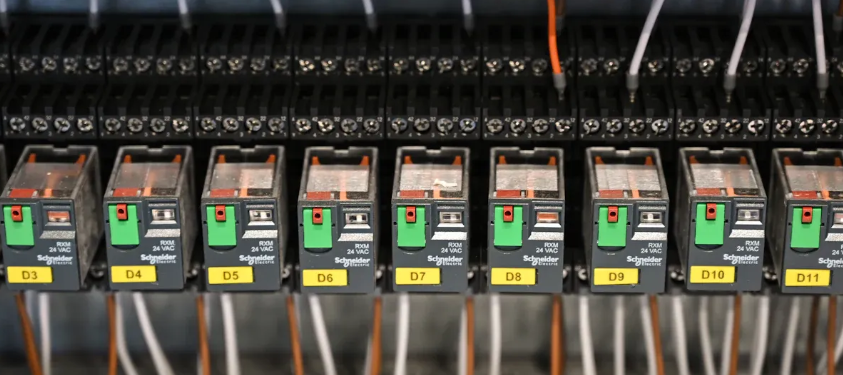 Wiring and Mounting Photoelectric Sensors in 2025UTMEL15 July 2025621
Wiring and Mounting Photoelectric Sensors in 2025UTMEL15 July 2025621Wire and mount photoelectric sensors in 2025 with step-by-step safety, wiring, and alignment tips for reliable installation and optimal sensor performance.
Read More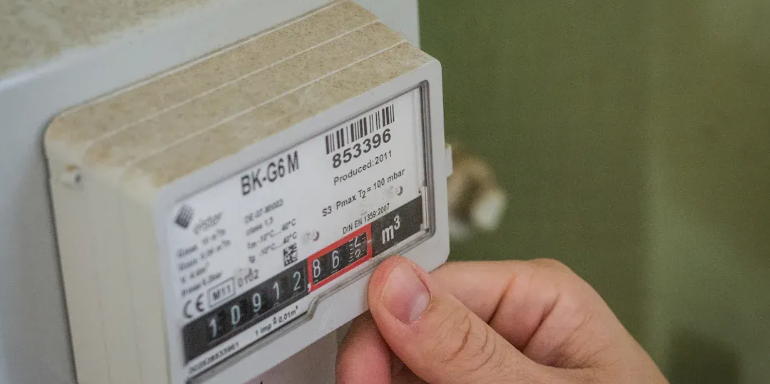 Essential Tips for Picking the Best Gas SensorUTMEL15 July 20251491
Essential Tips for Picking the Best Gas SensorUTMEL15 July 20251491Find out how to select gas sensors by matching target gases, environment, and compliance needs for reliable and accurate gas detection in any setting.
Read More
Subscribe to Utmel !
![EPM8CH008]() EPM8CH008
EPM8CH008Menda
![ETM80SB275]() ETM80SB275
ETM80SB275Menda
![EK75DT005L]() EK75DT005L
EK75DT005LMenda
![EPM80CS150]() EPM80CS150
EPM80CS150Menda
![16104]() 16104
16104FLEx
![EBM6CP302]() EBM6CP302
EBM6CP302Menda
![EBM60TZ015]() EBM60TZ015
EBM60TZ015Menda
![19787]() 19787
19787Festo
![ETM80B325]() ETM80B325
ETM80B325Menda
![ET80TZ160]() ET80TZ160
ET80TZ160Menda





